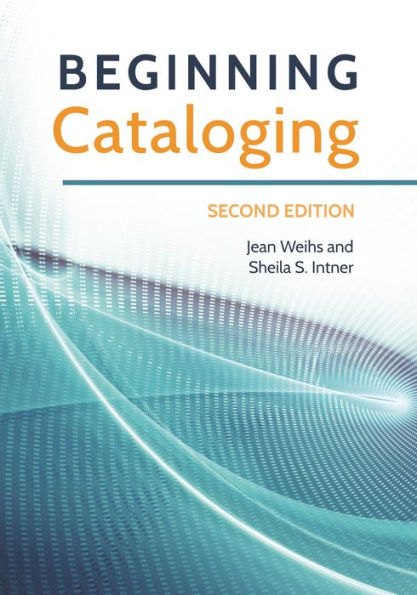Now thoroughly updated to include recent changes with RDA, this easy-to-use primer provides an introduction to standardized cataloging that will benefit library technicians as well as students in library technician and teacher librarian programs.
This easy-to-use primer provides a complete introduction to current standard cataloging practice. The simple language, helpful examples, and clear descriptions of processes and techniques make it a valuable tool for any beginning cataloger or worker in a technical services department. Updated with key information about RDA principles and practices and following the same pragmatic approach as the first edition, the book empowers students with an understanding of the core principles and language of cataloging. Readers will learn how to apply standard descriptive cataloging rules to assign subject headings and classification numbers and to create electronic records.
The book first examines the cataloging-in-publication data found on the verso of most books. Then, chapter by chapter, it explains how this data can be developed into a full bibliographic record that can be used in an online public catalog, covering all types of material formats (books, audiovisuals, images, sound, electronic resources and more). This guide will also serve as a workbook in formal education programs or distance education programs and be useful to library technicians and those working in areas where formal training is inaccessible.
1144905076
This easy-to-use primer provides a complete introduction to current standard cataloging practice. The simple language, helpful examples, and clear descriptions of processes and techniques make it a valuable tool for any beginning cataloger or worker in a technical services department. Updated with key information about RDA principles and practices and following the same pragmatic approach as the first edition, the book empowers students with an understanding of the core principles and language of cataloging. Readers will learn how to apply standard descriptive cataloging rules to assign subject headings and classification numbers and to create electronic records.
The book first examines the cataloging-in-publication data found on the verso of most books. Then, chapter by chapter, it explains how this data can be developed into a full bibliographic record that can be used in an online public catalog, covering all types of material formats (books, audiovisuals, images, sound, electronic resources and more). This guide will also serve as a workbook in formal education programs or distance education programs and be useful to library technicians and those working in areas where formal training is inaccessible.
Beginning Cataloging
Now thoroughly updated to include recent changes with RDA, this easy-to-use primer provides an introduction to standardized cataloging that will benefit library technicians as well as students in library technician and teacher librarian programs.
This easy-to-use primer provides a complete introduction to current standard cataloging practice. The simple language, helpful examples, and clear descriptions of processes and techniques make it a valuable tool for any beginning cataloger or worker in a technical services department. Updated with key information about RDA principles and practices and following the same pragmatic approach as the first edition, the book empowers students with an understanding of the core principles and language of cataloging. Readers will learn how to apply standard descriptive cataloging rules to assign subject headings and classification numbers and to create electronic records.
The book first examines the cataloging-in-publication data found on the verso of most books. Then, chapter by chapter, it explains how this data can be developed into a full bibliographic record that can be used in an online public catalog, covering all types of material formats (books, audiovisuals, images, sound, electronic resources and more). This guide will also serve as a workbook in formal education programs or distance education programs and be useful to library technicians and those working in areas where formal training is inaccessible.
This easy-to-use primer provides a complete introduction to current standard cataloging practice. The simple language, helpful examples, and clear descriptions of processes and techniques make it a valuable tool for any beginning cataloger or worker in a technical services department. Updated with key information about RDA principles and practices and following the same pragmatic approach as the first edition, the book empowers students with an understanding of the core principles and language of cataloging. Readers will learn how to apply standard descriptive cataloging rules to assign subject headings and classification numbers and to create electronic records.
The book first examines the cataloging-in-publication data found on the verso of most books. Then, chapter by chapter, it explains how this data can be developed into a full bibliographic record that can be used in an online public catalog, covering all types of material formats (books, audiovisuals, images, sound, electronic resources and more). This guide will also serve as a workbook in formal education programs or distance education programs and be useful to library technicians and those working in areas where formal training is inaccessible.
58.5
In Stock
5
1

Beginning Cataloging
160
Beginning Cataloging
160Related collections and offers
58.5
In Stock

Product Details
| ISBN-13: | 9798216052197 |
|---|---|
| Publisher: | Bloomsbury Publishing |
| Publication date: | 12/12/2016 |
| Sold by: | Barnes & Noble |
| Format: | eBook |
| Pages: | 160 |
| File size: | 5 MB |
| Age Range: | 7 - 17 Years |
About the Author
From the B&N Reads Blog
